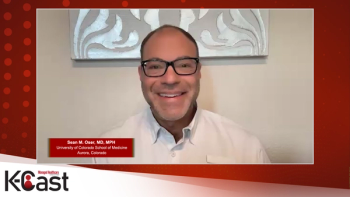
LixiLan-O and DUAL Studies in Type 2 Diabetes
A key opinion leader reviews clinical data for newly approved injectable medications, iGlarLixi and iDegLira, for the management of type 2 diabetes as seen in the LixiLan-O and DUAL studies.
Episodes in this series

Rodolfo J. Galindo, MD:The first study I’d like to explain is the LixiLan-O, which was 1 of the first studies done. It was published by Dr Melanie Davies, et al. The study question was simple: to compare this new agent, iGlarLixi, the combination of insulin glargine and lixisenatide, with its individual components, glargine and lixisenatide. The study was designed to include patients who were insulin naïve-patients who weren’t treated with insulin before. They were uncontrolled, meaning they had an A1C [glycated hemoglobin] at entry between 7.5% and 10%, which is a high level for many patients. Patients who have been taking metformin alone could have been taking metformin and another second oral agent. This is a common in our practice: many patients struggle to get their A1C under control on metformin or metformin and a second oral therapy. Insulin can do that, but what we’ve learned is that it will do that at the expense of weight gain and increasing hypoglycemia, which is the main limitation of insulin therapy.
This study compared these 3 arms. The hypothesis was proven because iGlarLixi [insulin glargine, lixisenatide] had a greater reduction in hemoglobin A1C. More subjects in that group reached the target hemoglobin A1C of less than 7%. Another important metric that we have, that is important not only to us scientists and clinicians but also to patients and payers, is the combination of a hemoglobin A1C less than 7% and no weight gain. If you have a patient who has type 2 diabetes—80% to 90% of them are overweight or obese—and you put them on a therapy that made them gain weight, they’ll have other complications later. That’s why it’s important for payers to understand that some therapies that improve A1C at the expense of other complications may not be the perfect therapy. You need to have more complementary reactions.
It was very interesting to see that that composite outcome of A1C less than 7% and no weight gain was achieved in more patients on the iGlarLixi [insulin glargine, lixisenatide] group compared with the glargine and the lixisenatide. As I explained earlier, the group with iGlarLixi [insulin glargine, lixisenatide] had a better postprandial glucose control, meaning it had a better control of the spike on the glucose after eating compared with the group with glargine. Glargine focuses only on endogenous glucose production, resulting in a better-fasting glucose. You need the second component, and that’s where lixisenatide comes in.
Patients are really happy when you talk about these and when they see the results: patients treated with iGlarLixi [insulin glargine, lixisenatide] had a mean body weight decrease. They had decreased body weight and lixisenatide, compared with glargine, which increased body weight. When you treat a patient and they know they’re going to be losing weight, they feel much better. They try to take the medication because they feel it’s really important. Patient-reported outcomes are important. We try to focus on A1C because of the scientific value, but sometimes patients don’t understand that. Patients want to see their own outcomes. It’s very important to understand what your patient needs.
In a post hoc analysis for LixiLan-O for patients with hemoglobin A1C more than 9%—remember, patients could have an A1C of up to 10%; this is a high-risk population with high glucose and very uncontrolled diabetes that needs insulin therapy—there was also a greater reduction in A1C when you treat them with iGlarLixi [insulin glargine, lixisenatide] compared with glargine and lixisenatide. It was a good development in our therapeutic for type 2 diabetes, and it was proven to be much better than the 2 individual components.
The other study I want to discuss is DUAL-I and the other fixed-ratio combination available, which is degludec and liraglutide. DUAL-I included patients [with an A1C of] 7% to 10% and a BMI [body mass index] less than 40 on metformin, with or without pioglitazone, a second oral agent. They saw higher A1C reduction, with more patients achieving an A1C target of less than 7% and less weight gain compared with degludec. It’s interesting because they didn’t see a difference in fasting plasma glucose, and it has to do with liraglutide, which is long acting. Lixisenatide is considered short acting, and it has a bigger effect on delaying gastric emptying, which is important for the postprandial glucose spike. In summary, years ago we were excited about this development in therapeutics. Used as a complementary action of basal insulin with GLP1 and many other studies, this proves that when you combine basal insulin with GLP1, you have better patient-related outcomes: greater A1C reduction, less weight gain and in some studies weight loss, less hypoglycemia, and better postprandial glucose control.
Transcript Edited for Clarity
Newsletter
Get the latest industry news, event updates, and more from Managed healthcare Executive.




















































